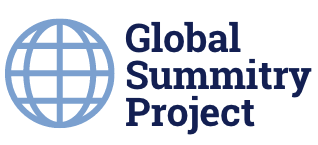Original blog post can be found on the Rising BRICSAM Blog.
This weekend we open on a sustained set of Summits beginning with the G7 hosted by the UK in Carbis Bay. Along with various states easing restrictions and beginning to open after months of Covid lockdown, we now have the in-person opening of this summit season. The G7 will be followed by a NATO gathering, then an EU-US summit and then a sort of ‘back to the future’ classic ‘cold war’ summit, this between US President Biden and Russian President Vladimir Putin.
Our colleague, Stewart Patrick at CFR identified 10 summits just before the start of this calendar year. His list included:
- The NATO Summit
- US-EU Summit
- Summit for Democracy
- UN Convention on biological diversity COP15, Kunming China
- G7 Summit
- WTO Ministerial Conference
- NPT Review Conference
- The Opening of the General Assembly of the UN
- G20 Summit
- UNFCCC COP26 Glasgow
Now there are even some others as well that are not on the list and have occurred already. Before this G7 we saw the newly elected US President hold a Quadrilateral Security Dialogue or Quad Summit, on March 12th, the first with leaders from India, Australia, Japan and the United States. And in April the President organized a Leaders Summit on Climate. Over 40 leaders attended virtually including notably President Xi Jinping of China. As the State Department noted, the Climate Summit was intended “to rally the world in tackling the climate crisis and meeting the demands of science.” It was also seen as a precursor to the COP26 Glasgow meeting scheduled to be held from November 1st to 12th and right after the G20 Summit.
It is tough to keep track of all the summits planned, or already concluded. But here are some additional summits planned for this calendar year.
- APEC
- East Asian Summit
- ASEAN Summit
What is to be made of all these summits? Well, first it suggests that the contemporary global order has come to rely increasingly on summit gatherings to manage international policy. The global order gatherings have noticeably shifted from formal institutions, many created after World War II increasingly to informal institutions. That is for good and ill depending on the Informal. There is no question that in some instances leaders gathering have a limited impact on policy making and global governance. It can be just a media moment for the gathering and little if any policy progress. Even classic global summits, notably the G20, requires what Colin Bradford and I have described in Foreign Affairs as “strengthening”. Improvements we suggested are:
Addressing that problem and others will require institutional change. Leaders’ summits should focus on systemic and long-term issues of public concern, leaving detailed policies to ministers. Sherpas should work to push such matters to the front of the agenda. G-20 ministers, moreover, should have the power to develop their own action plans on urgent issues such as global health emergencies or financial stability—communicating with leaders but not waiting on them. The G-20 also has a follow-through problem; the host leader changes yearly, making it difficult to coordinate a given policy’s implementation. A small but permanent secretariat could address that, helping shepherd issues from start to finish and then communicating the outcome to the public.
Institutional and process changes are required if the G20 is going to meet the growing global governance challenges. And further we need to see collective action at these summits to move the yardsticks on threatening global governance problems.
The challenges to collective action are all too apparent. Let’s focus for a moment on the two classic global summits the G7 that has just concluded and the G20 hosted by Italy in Rome at the end of October – just before the UNFCCC COP26 Summit hosted by the UK and Italy.
Analysts David E. Sanger and Mark Landler from the New York Times, suggested the following division of views on China:
Officials emerging from the meeting said there was a clear division of opinion about how to take on China. Germany, Italy and the European Union were clearly concerned about risking their huge trade and investment deals with Beijing or accelerating what has increasingly taken on the tones of a new Cold War.
Still, Mr. Biden senses an opening, as European nations have begun to understand the risks of dependency on Chinese supply chains, and have watched China’s reach extend into their own backyards.
It has been evident that President Biden saw the G7 as an opportunity to rally the key democratic states to emphasize democratic values and limit Chinese actions. Again from the New York Times: “Mr. Biden used the meeting to advance his argument that the fundamental struggle in the post-pandemic era will be democracies versus autocracies.”
Indeed there was talk earlier by Boris Johnson that he might promote the emergence of the D10 from the G7. He did invite other democracies including South Korea, India and Australia, and in fact he added South Africa but he resisted an initiative to transform the G7 into a focused democratic club such as the D10. And while Patrick in his list of summits did add the Summit for Democracy in his list which pointed to President Biden’s expressed hope to hold the following summit: “The president-elect has pledged during his first year to “bring together the world’s democracies to strengthen our democratic institutions, honestly confront the challenge of nations that are backsliding, and forge a common agenda to address threats to our common values”. Such talk by the Biden Administration has recently been far more muted.
The conundrum remains for Biden and his Administration: how best to tackle the growing challenge from China and yet maintain multilateral initiatives to tackle the growing global governance challenges, climate change, the next pandemic and a host of other issues. It is evidently all in the balance of actions. It is evident that the Biden Administration sees the importance of revitalizing US and other allies, “building back better” becoming more competitive with a focus on revitalizing the domestic economy, infrastructure, science and technology research, tackling the decades old income inequality with the US Gini coefficient one of the worst among the established powers. Such inequality has fuelled some of the recent divisive politics in the United States and throughout the West.
Meanwhile, the focus on a democracy versus autocracy thematic in the G7 would likely raise the hackles in Beijing and make it more difficult to forge collective efforts in the G20. As my colleague Colin Bradford has written recently at Brookings:
The result of this increasing emphasis on values and like-mindedness, the West is creating a polarization between the Western and non-Western world. This binary polarization is intruding into the G20, which otherwise had been an inclusive forum which did not insist on regime characteristics given that some countries which are in disputably important are not democracies. China being the most obvious and most crucial example.
While the final communique at the Cornwall G7 called out China for human rights violations and declared that the members would continue to consult on their approaches and also stated: “challenging [China’s] non-market policies and practices which undermine the fair and transparent operation of the global economy,” the effort appeared hardly conclusive. The statement would suggest probably a lot of diplomatic effort by US officials with a wary set of allies that resulted in this measured outcome:
49. At the same time and in so doing, we will promote our values, including by calling on China to respect human rights and fundamental freedoms, especially in relation to Xinjiang and those rights, freedoms and high degree of autonomy for Hong Kong enshrined in the Sino-British Joint Declaration and the Basic Law.
Such diplomatic effort might have been better exercised building more significant collective policy on energy, the pandemic and other crucial policies that could be carried forward to other summits most particularly the G20. Nevertheless, according to the WSJ US officials contented themselves by asserting these China statements were tougher than previous statements on China. The outstanding question is whether this measured statement impairs collective efforts. If it does then how does the multilateral system advance.
A concluding thought was supplied by Shiro Armstrong, editor of the EAF as he canvassed the most recent gatherings in Asia and globally:
But global rules need global buy-in. As we move to a multipolar world, groupings like APEC can help build consensus but ultimately the G20 has the best chance at new rules for a post-COVID-19 global order.

